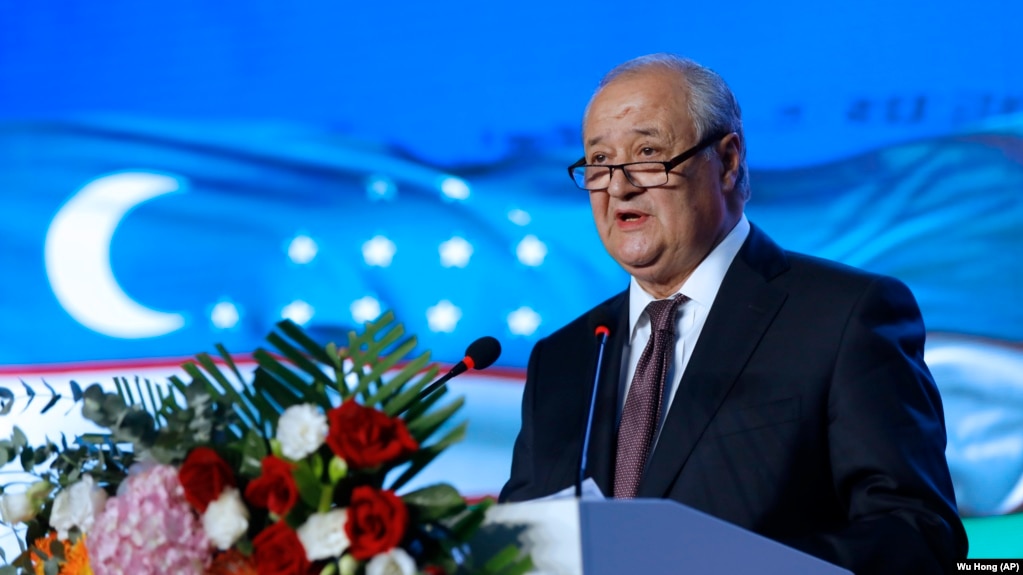Against global crisis, Tashkent chooses unity in Central Asia
Former Foreign Minister Kamilov analyzes Uzbekistan's role in the region from a stability and development perspective. From the closed borders of the recent past to the process of “rebooting relations,” resulting in increased trade and investment. A return to the days of the Great Silk Road.
Moscow (AsiaNews) - Tashkent's former foreign minister, 76-year-old Abdulaziz Kamilov, President Šavkat Mirziyoyev's special representative for foreign policy issues for the past two years, has published an influential article in the Jangi Uzbekiston (“New Uzbekistan”) newspaper.
Focusing on the theme “New Central Asia in Uzbekistan's Foreign Policy,” in the piece he states that “the deepening global crisis of confidence, and the escalation of armed conflicts are endangering the stability and sustainable development of the entire region.”
The author of the article takes his cue from the recent consultation meeting among Central Asian leaders in Astana, recalling the difficulties of integrating these countries with each other in recent years.
“Only seven years ago, our borders were practically closed in all directions,” Kamilov writes, ”we had to overcome conflicts and minefields at the borders, transport blockades and insurmountable barriers to trade, endless discussions on the use of water resources, and every trespass of flocks to some reservoir for watering threatened to turn into direct clashes.
According to the former minister, in recent years a process of “rebooting relations” has begun as never before, and internal trade between the Central Asian countries has grown 4.4 times, five times more are joint ventures, and investment volumes have doubled.
He therefore believes that “in the new geopolitical conditions, Central Asia is recovering the role it played in the days of the Great Silk Road, as a bridge between East and West, North and South, a crossroads of economic interests of different types and directions.”
All analysts agree in observing that every country that wants to have a significant weight in world geopolitics nowadays tries to put pressure in various ways on those in Central Asia, which is now becoming a real “geopolitical competition zone.” Kamilov insists, moreover, that the region “has now become in good substance an autonomous player in the various games in the world arena, strengthening its identity as a collective subject.”
There are already 10 international meetings in the 5+1 format, involving 40 countries and two supranational bodies.
In this growing interest, of course, purely economic factors come into play above all, as Central Asia “constitutes a market of more than 80 million consumers, where 7 percent of the world's oil and gas resources, large deposits of critical materials and rare minerals, between 5.2 percent and 38.6 percent of those essential for digital and ecological transitions are concentrated.”
Kamilov emphasizes President Mirziyoyev's great role in resolving tensions and divisions with neighbors, emphatically calling him “the great architect of Central Asia,” who has set as a goal of his foreign policy doctrine the achievement of the “zero problems with sister countries” quota.
Tashkent's efforts at the politico-diplomatic, economic, cultural and humanitarian levels are not only radically improving relations with his neighbors, but are helping to truly create a collective “new format,” recalling, for example, the full legal definition of borders with Kazakhstan, and the many advances in demarcation with Turkmenistan, Tajikistan and Kyrgyzstan.
Border uncertainty is a Soviet legacy, from when Moscow kept issues in abeyance so that it could always have the last word in the face of any claim or tension. In conclusion, Kamilov enumerates the challenges that await the further progress of regional cooperation, at the political and economic level, in the development of transportation and communication potential and in the energy and climate sphere, to cultural relations on the basis of the prevailing Turkic identity, but without forgetting the other specificities of the five Central Asian countries.







.png)












